Summer trip off the beaten track
Siciliana Valley: A food lover’s journey under Gran Sasso
History, nature and flavors of the Province of Teramo, the Heart of Abruzzo
Visiting the Siciliana Valley is a fantastic idea for a unique, leisurely gastronomic vacation in Abruzzo! Siciliana, you may wonder? What is that related to the Abruzzo region? Not only does it have a connection, but it’s also among the most genuine and unexplored places in what is already Europe’s greenest region, both in terms of the natural world and human society. “Valle Siciliana” is the historical name of the Mavone Valley, an area comprising five municipalities in the province of Teramo (Isola del Gran Sasso, Castelli, Tossicia, Colledara, Castel Castagna), on the northern side of the Gran Sasso and Monti della Laga National Park, at the foot of Corno Grande, the highest peak in the Apennines. The name seems to date back to the Siculi, the first inhabitants of these lands who arrived around two thousand years ago, probably from Gargano. But there is also a more fascinating story that evokes a transcription error that persisted over time from the Via Caecilia, a road that passed nearby to connect Rome to Giulianova (Castrum Novum). Caeciliana was mistakenly transformed into Siciliana.
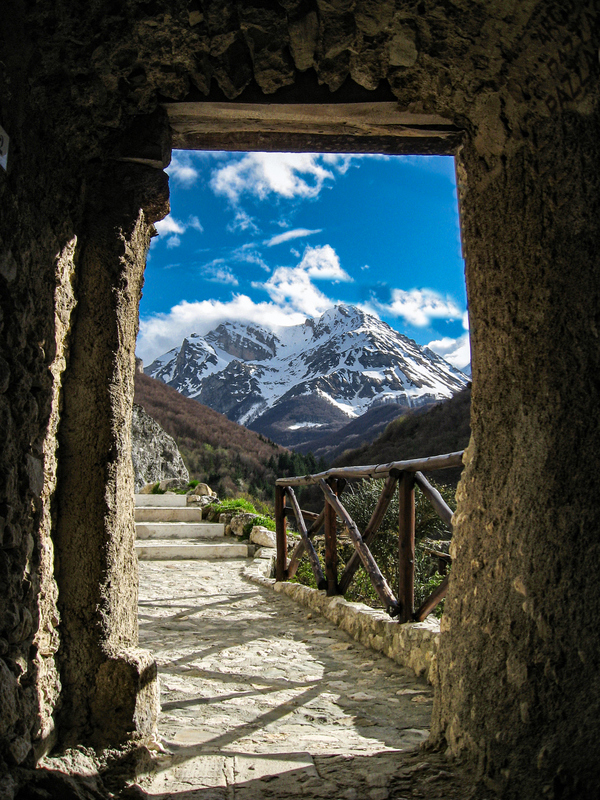

Spread across three regions, five provinces, and forty-four municipalities, the 150,000 hectare Gran Sasso Park is a green lung. Compared to the normal Apennine geological formation, the mountains’ formation is more like to that of the Dolomites. The variety is incredible: 231 endemic plant species are specific to this area out of over 5,000 plant and animal species. It is also a unique water reserve. The National Institute of Nuclear Physics established the world’s largest and most significant underground scientific research laboratory directly beneath the Gran Sasso, utilizing the 1,400-meter mountain’s ability to shield against cosmic radiation. This area is so exceptional in this regard.
You can spend a few days exploring the valley by lodging in Teramo, for instance at the Park Hotel Sporting, which is cozy and well-located. Village by village, following traditional products that must be tasted only in-person, and discovering the culinary delicacies that vary by parish, there are countless opportunities for outdoor activities suitable for every level of fitness.
Pietracamela
Pietracamela is one of the most beautiful villages in Italy, ancient and perched on the mountain at 1,005 meters altitude. It used to be called just Preta – meaning stone – due to a looming rock that towers at the entrance of the village. Perhaps because of its shape, the slightly exotic suffix Camelo was later added. Today, the camel is also in the coat of arms. Upon arriving in the village, you will immediately see the monument to the climbers, erected in 2023 for the centenary of the foundation of the Aquilotti del Gran Sasso, the longest-standing mountaineering association in Italy.
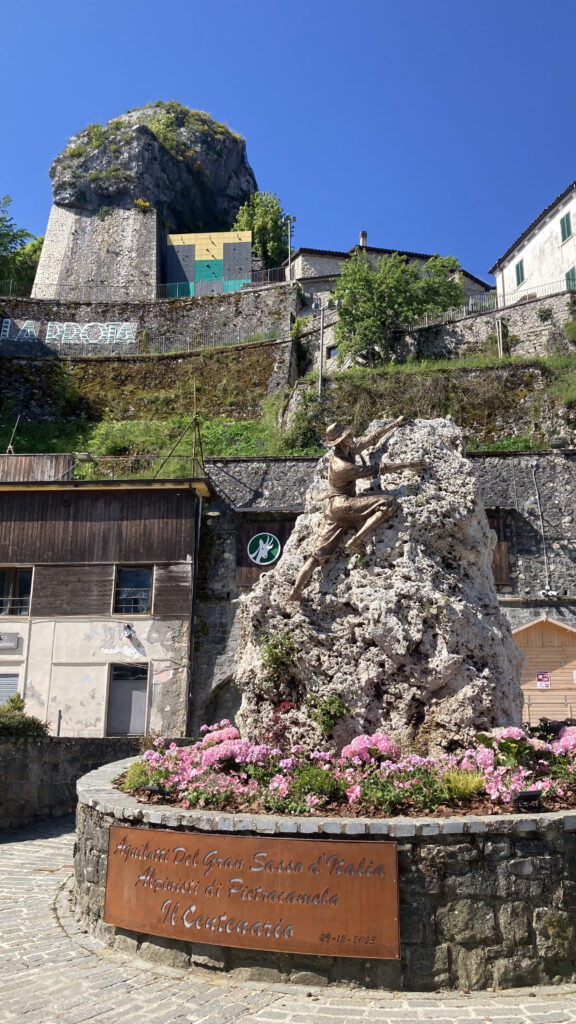

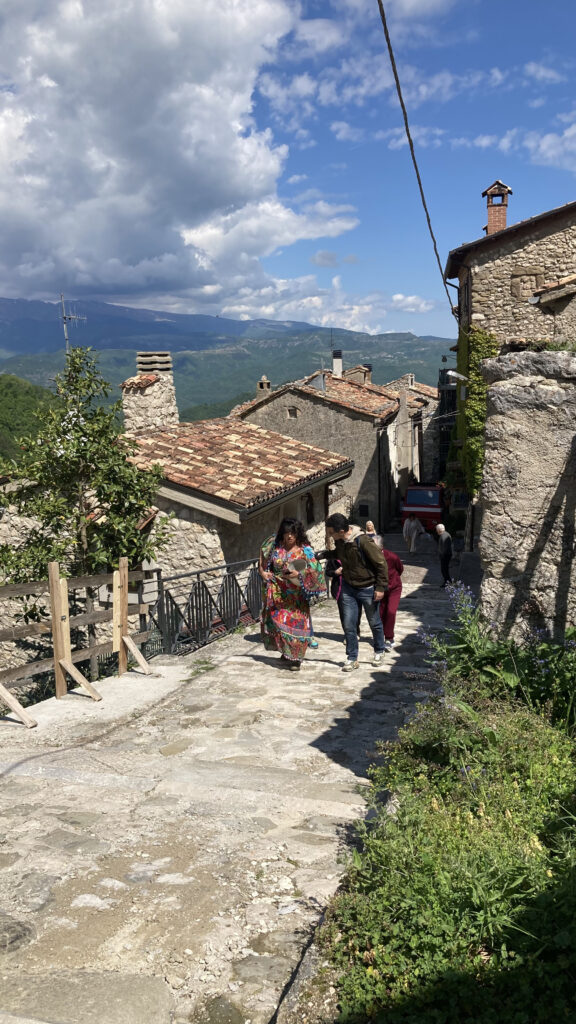
This municipality also includes Prati di Tivo, a tourist resort at 1,450 meters above sea level known for sports tourism all year round. Besides trekking and climbing, a good tip is to lose yourself among the narrow alleys of the village, where if you look up, you might notice a gafio (a Lombard-origin balcony) or enter the church of San Giovanni Battista, dating back to 1432, which houses an 18th-century mechanical clock still working with counterweights. Once, from the muffled or less muffled sounds of the clock, you could guess how much snow had fallen during the night before even opening the window.



With a short hike to the Grotte di Segaturo, you can also see the rock paintings of Guido Montauti, whose work “Il pastore bianco” is displayed in the municipal hall. An interesting fact: the local dialect is an archaic form of Abruzzese that has the dignity of a true language. Since there are no documents certifying its origins, the inhabitants have created a WhatsApp group to preserve it.
Azzinano
In the Palazzo Marchesale of Tossicia, there is the Museum of the Peoples of Gran Sasso, dedicated to the techniques and traditions of the Siciliana Valley. There is also a contemporary art section with several paintings by Annunziata Scipione (1928-2018), one of the greatest Italian naïf painters and sculptors. She inspired the creation of an open-air museum in the nearby hamlet of Azzinano, dedicated to old-time games: since 2001, every year between July and August, the best Italian naïf painters gather in this 19th-century village to create murals on the theme of games, with 57 murals today.



A walk through the alleys of Azzinano is a continuous discovery of vivid colors, perspective games, and optical illusions on the walls of the houses. It is worth asking the friends from the Pro Loco about the meaning of the ancient games depicted, which hold great historical memory. You can enjoy the lavender blossom in the appropriate season and stock up on locally made lavender sachets as souvenirs while you’re here. Also, you should not miss a visit to El Guirero, a three-generation family-run restaurant where owner Marco will meet you in front of the grill and offer you a taste of his carefully handmade arrosticini – the tradizional lamb skewers – which are both classic and updated (the truffle ones are impressive).



Colledara
Colledara is the master of porchetta! Served hot in a sandwich and with much fewer spices than one might think. The porchettaro, they say around here, must also be a bit of a psychologist, to quickly understand people’s tastes and find the right cut. All accompanied by a few glasses of vino cotto, a sort of boiled must with a secret recipe that varies from family to family. A good time to visit these parts is in August, during the porchetta festival, but there are interesting opportunities throughout the year.



For example, you can take a tour of the hamlet of Villa Illi, where, with the collaboration of the art institute, an open-air history museum has been created, dotted with ceramic panels depicting the Unification of Italy and the Risorgimento. Or you can choose one of the many proposals from the group Esperienza Natura, which organizes both sporting tourism activities (trekking, e-biking, MTB, Nordic walking, hiking) and slower experiences dedicated to well-being in contact with nature (meditation, forest bathing, yoga). Daily activities or multi-day routes that even cross the entire Gran Sasso range, if you wish.
Isola del Gran Sasso
When the Ruzzo and Mavone rivers encircled the island, it was known as Isola del Gran Sasso. Here you should definitely visit the Sanctuary of Saint Gabriel of Our Lady of Sorrows, but even more interesting is being accompanied by the friends from the Tre Porte Cultural Association to see the remains of the ancient Romanesque church of San Giovanni ad Insulam (or San Giovanni al Mavone), erected between the 11th and 13th centuries but documented from 1184. Of the convent that existed all around, only fragments of walls survive today, and the interior is still under restoration after the 2009 earthquake, but you can see the fragments of the 15th-century fresco in the apse and, above all, you can descend into the crypt, so large that it suggests the building existed even before the year 1000.


It is also worth dedicating some time to tasting the typical products, all rather heroic productions, dealing with the mountain and its difficult climate. For example, you could taste the olive oil from the Gran Sasso Mill, family-run and organic since 1949, with its slightly bitter and spicy aftertaste; the honey from the Virtù d’Abruzzo farm, produced without stressing the bees, even from particular plants like ivy; or the cheeses from the CaGiò farm, which strives to preserve and pass on the ancient art of cheesemaking, working with freshly milked milk and keeping the animals free to graze. For a taste of traditional dishes, note down the restaurants San Giovanni and the Cantina degli Antichi Mestieri. The Chitarra con le pallottine pasta, which is covered in the traditional Teramo sauce topped with little meatballs, is a must-try. Similarly, the Maltagliati con le voliche pasta is served with wild spinach that grows at an altitude of 1,800 meters and must be harvested by hiking up and down the mountains before the cows discover the sprouts.
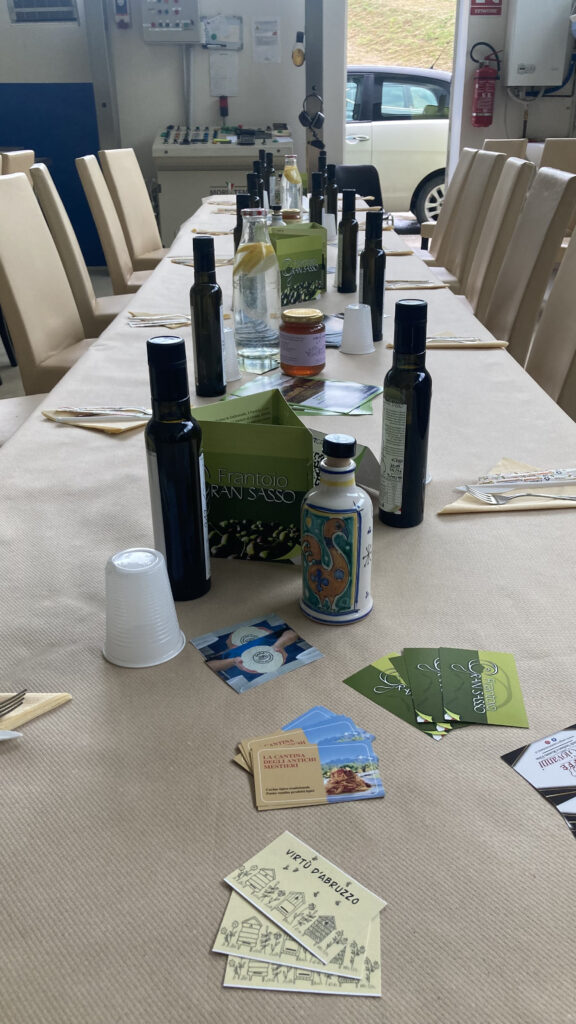

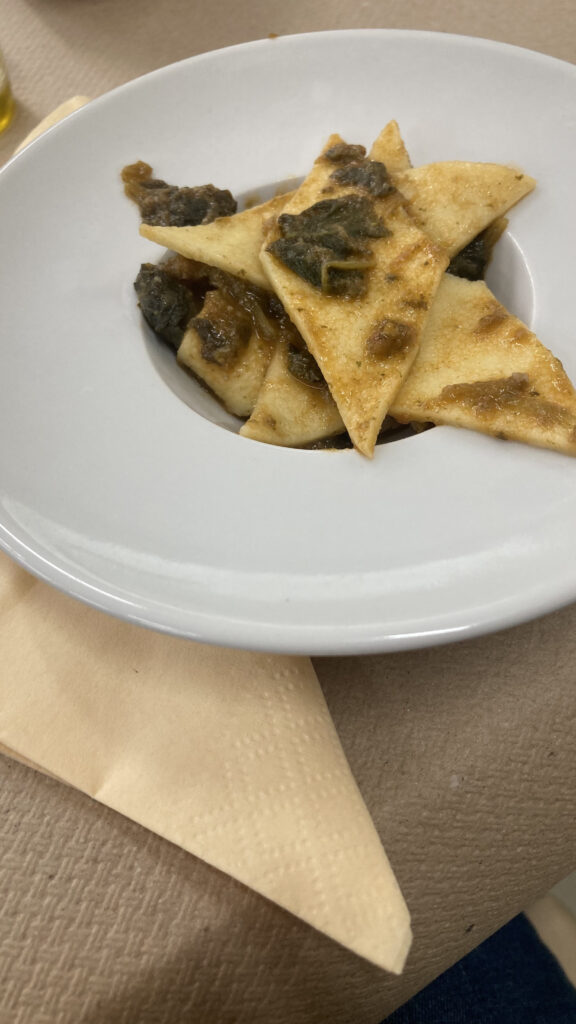
Castelli
Castelli is also among the most beautiful villages in Italy, with its unmistakable profile perched on the rock and five centuries of ceramic art behind it. Here, artistic ceramics are everywhere, from the countless artisan shops to the street signs. History has it that in the 1300s, the Benedictine monks settled in Castelli taught the population to create ceramics, leveraging the great wealth of clay and wood. Since the 1700s, they have specialized in depicting landscapes and mythological scenes, a characteristic that makes Castelli ceramics so recognizable and different from others. A walk in the village cannot miss visiting some workshops to buy precious handcrafted objects and hear the story of this art, for example, from Simonetti.
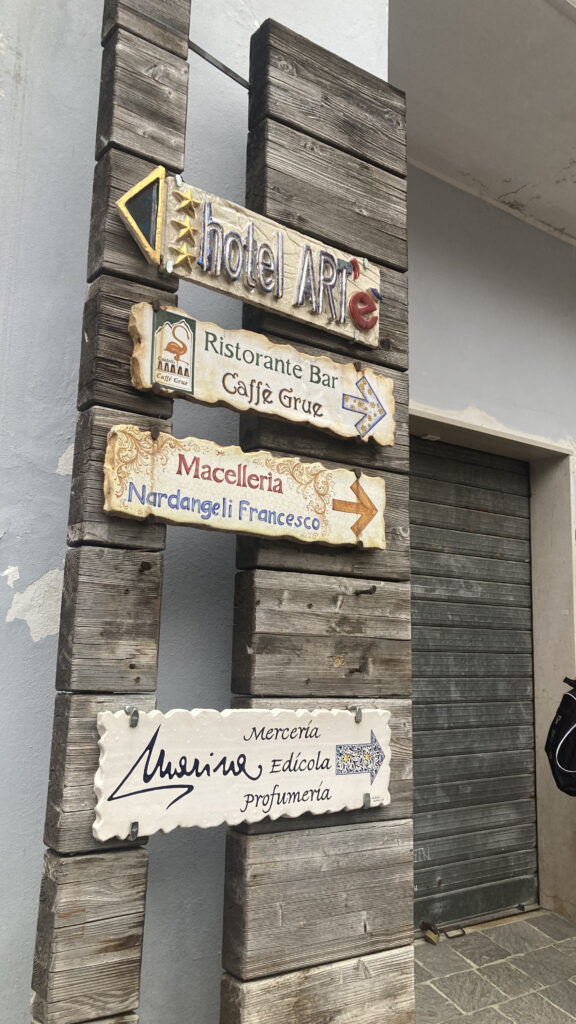


But the craftsmanship is also evident in the gastronomic productions, so much so that local producers have thought of uniting all the excellences produced in the shadow of Gran Sasso under a single brand: the Made in 2.192 association (from the meters of the highest peak). Look for this logo on the packages, and you will be sure to have one of the best products from the area, respectful of the methods of processing and the origin of the raw materials. In particular, look for and give friends at home the splendid boxes of Gran Sasso Frollini, simple honey and solina flour cookies that faithfully represent the mountain’s skyline. The best souvenir.

Perhaps along with a bottle of the medicinette from Scuppoz Spirits, a local liqueur distillery (the laboratory is in Campovalano) that, studying herbs, roots, and spices, has created a series of traditional liqueurs, bottled in the style of 1930s medicines. Because in these mountains, after a hearty meal, they say in dialect “do you want the medicine?” to indicate the digestif. You can choose from gentian, ratafia, licorice, anise, and herbal bitters; each liqueur tells a story.
Side Trips Along the Way
Three additional tips, since you’re here: two nearby and one a bit further towards the sea. A very nice experience is lunch or dinner at the Godere Agricolo Farm in Campli, whose name says it all (i.e. farming delight). The owner, Claudio Ventura, will be upfront about one thing from the start: you have to take your time and enjoy the countryside and wildlife without overly intruding. This is why you should visit the surrounding areas in addition to sampling the traditional recipes that are prepared strictly according to the seasons: fields with long grass growing in harmony with crops, a self-consumption garden, and bushes of impromptu herbs. Maybe take a book and take a seat beneath a tree to read. Here, on the verge of the Marche region, is a vintage postcard view of the twin peaks of Monte Fiore and Monte Campli.




Imagine a place where, while still being in the same province, you could quickly go from high mountains to the sea! A voyage of flavors and tastes that inspires inventive pairings, such as trabocchi and transhumance, sea and land, and pasta with anchovies and pecorino! Pushing past the Siciliana Valley toward Alba Adriatica, you can witness the success of this experiment at Valerio Di Mattia’s Il Palmizio restaurant (president of the association of Abruzzese restaurateurs and ambassador of taste), where even the regional Brodetto – a mash-up of Giulianova and San Benedetto del Tronto recipes – is worth trying.

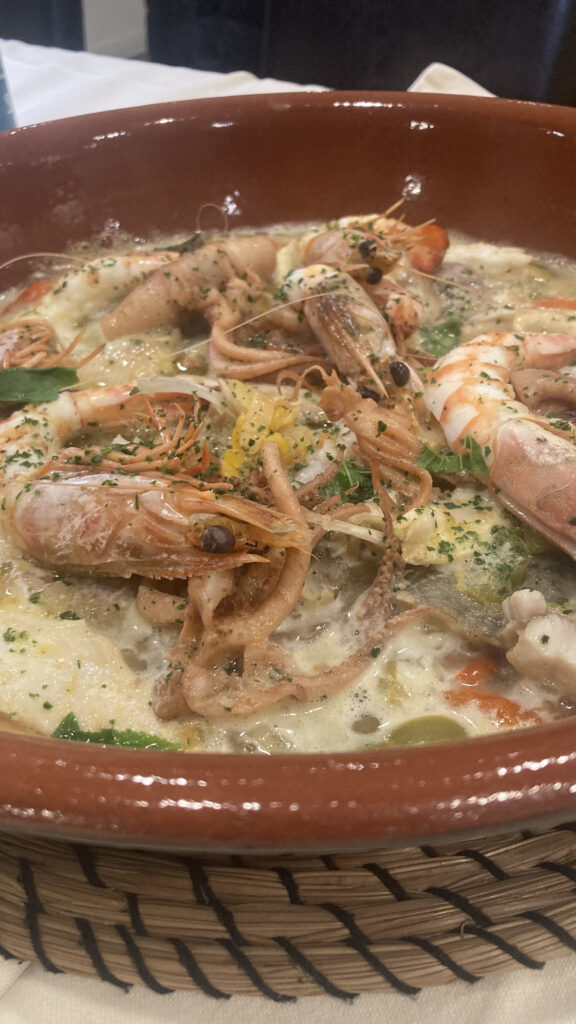


On the way to the sea, stop at Canzano, at the Tenuta Cerulli Spinozzi, for a glass of DOCG wine from the Teramo Hills. An organic and sustainable production that enhances native grapes: Montepulciano, Trebbiano, Pecorino. Wine – they say – is bottled poetry: the moment the bunch is picked from the plant is the moment of maximum quality. This is what you need to find in the glass.


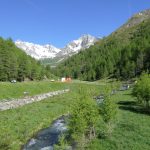

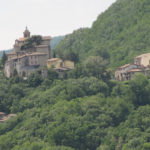





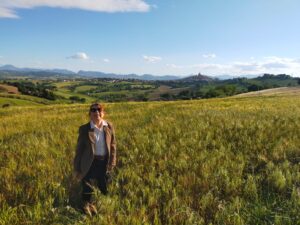




1 Comment
Siciliana Valley: A food lover’s journey under Gran Sasso | My Blog
[…] Source link […]